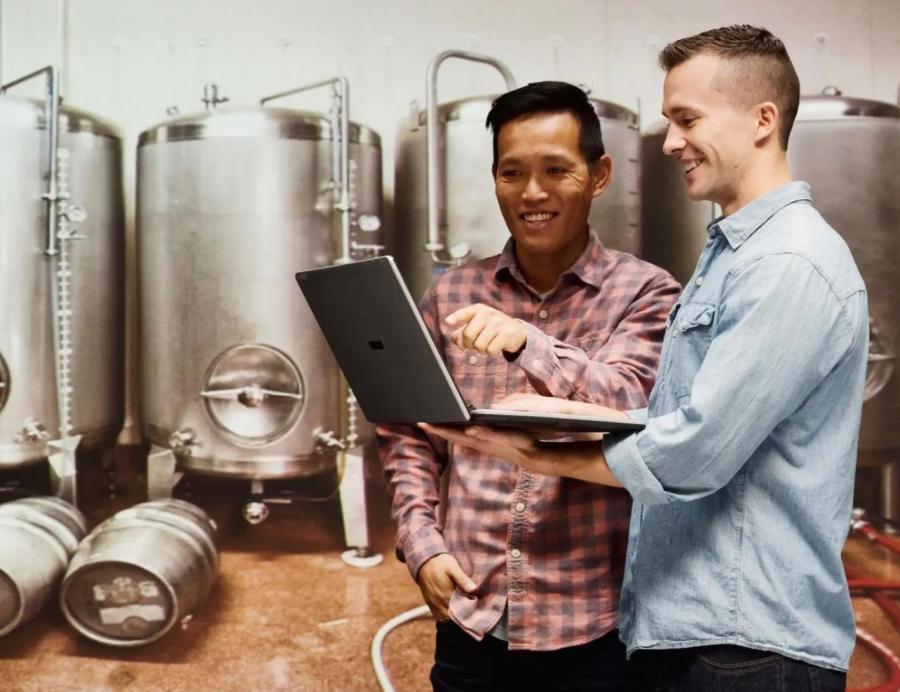AB InBev improves MTTR by 80%
Share this Story


New Relic helps with the how. It allows us to pinpoint issues down to specific lines of code, and that in turn helps drive accountability, which is what it’s all about at the end of the day.
- Company size
-
180,000+
- Featured Use Cases
Mention Anheuser-Busch and people are likely to picture a can of Budweiser or a team of Clydesdale horses. But these iconic images tell just a small part of the story.
While Budweiser remains a flagship product—and those teams of Clydesdales continue to pull that red, white, and gold beer wagon—Anheuser-Busch has come a long way since it was first founded in St. Louis, Mo., more than 100 years ago. Today, the company is known as Anheuser-Busch InBev, or simply AB InBev. With headquarters in Leuven, Belgium, and operations in more than 50 countries, the AB InBev of today encompasses more than 500 brands and an almost infinite variety of brews, making it the world’s largest beer company.
Moving to the cloud and DevOps
Always a technological innovator, Anheuser-Busch was the first American brewer to employ pasteurization, AB InBev turned to technology again in 2017 to embark on a journey of digital transformation. Its goal: optimize business operations, growth, and customer experience by migrating data centers to the cloud and adopting a DevOps deployment model.
For the company’s global B2B operations, this journey meant augmenting its in-person salesforce with an e-commerce platform, consisting of a website and mobile app, where bar owners, restaurateurs, and retail store operators can make purchases directly. It fell to AB InBev’s Global Director of Engineering Yang Tang and Global Director of Digital Solutions Eduardo Juarez to not only make this happen, but make it happen fast. Within three years, the company wanted 50% (or a whopping $36 billion) of its B2B sales to be flowing through the e-commerce platform, up from just 10% at the time.
But the already substantial task of transforming AB InBev’s points-of-consumption (POC) model into a digital business was made even more challenging by the fact that each of the company’s nine geographic zones had initially approached the task autonomously.
“In the beginning we had nine platforms, each of which was built by a different group in a different region. What’s more, we had outsourced most of the work to contractors. With no single view into the performance of our website or mobile app and very little accountability, it was impossible to gauge how we were doing," Tang says. “We couldn’t have strategic discussions because we lacked the data that would show us response times across the business. What’s more, without that data it was impossible to quickly solve problems or improve performance.”
With improved performance a key goal for the new platform, the company was also looking to adopt the DevOps methodologies that would facilitate continuous delivery of new products. Again, visibility was key. Before new releases could be delivered, they needed to be validated, but without a system-wide view of performance, it was impossible to accurately gauge a release’s impact.
Data to support a DevOps approach
It was clear to Tang and Juarez that to reap the true benefits of digital transformation, AB InBev needed a monitoring solution that could deliver the data required to confirm the company’s newly adopted DevOps approach and to improve the performance of its e-commerce operations. While AB InBev was already using UpTrends to monitor infrastructure performance, that tool only covered a tiny portion of the B2B organization’s enormous technology stack, which includes Amazon Web Services (AWS) and Microsoft Azure for cloud services, Magento for e-commerce, Kubernetes and Docker for microservices, and more.
When Tang came on board a year ago, he discovered that although the company had installed New Relic application performance monitoring (APM), it was not using the monitoring tool. This changed when an outage occurred, and Tang and team—with New Relic’s assistance—deployed APM on AB InBev’s production apps, applied some custom instrumentation, and resolved the issue over a weekend. From this point on, AB InBev was sold on New Relic.
Fast-forward a year, and AB InBev has deployed the full New Relic platform, which, in addition to APM, includes synthetics, browser, mobile, and infrastructure. "New Relic helped us solve the basics by showing us where problems were occurring,” Juarez says. “Now we’re able to take action to make improvements and have more effective and focused conversations about the business.”
Pinpointing problems with mobile
Today, with New Relic deployed throughout AB InBev’s IT environment, the brewer has gone far beyond just confirming its digital transformation strategy and DevOps deployment model.
Take the company’s mobile app: When sales via the app were down in some zones, the company had no idea why. Was the app crashing? Were there cart errors? Or was the site just agonizingly slow? By consulting their customized Insights dashboards, the AB InBev team was able to spot the problem quickly: Many of the company’s customers, especially those in Latin America, were using older cell phones—either because they couldn’t afford the most up-to-date ones or because they were worried that their high-end smartphones would be stolen if they used them in certain areas. Those older phones, which are typically limited to just a gigabyte of RAM, simply did not have the resources to run the AB InBev mobile app, which was optimized for the latest devices.
The solution was simple: redesign the app to make it more accessible for lower-end phones. But without New Relic, AB InBev would not have been able to pinpoint the problem—or subsequently improve the experience of hundreds of thousands of users by fixing it.
Another area in which New Relic has been helpful is in measuring AWS cost and usage. “Migrating different geographic zones to AWS would have been a nightmare if we’d had to manually dig through logs and various data sources to figure out how much to charge each country for its AWS usage,” explains Tang. “With New Relic, it’s been easy because we can display that costing data in a single dashboard. As a result, we were able to accurately allocate usage in each zone—meeting the needs of each region while managing the business on a global scale.”
Through it all, AB InBev has relied on the swift and efficient assistance of New Relic support. Says Juarez, “Sometimes I’ve created a ticket, and within five minutes the New Relic team has responded. They work hard to solve my problems quickly.”

Migrating different geographic zones to AWS would have been a nightmare if we’d had to manually dig through logs and various data sources to figure out how much to charge each country for its AWS usage. With New Relic, it’s been easy.
Delivering a better online customer experience
While New Relic has certainly proved its worth in validating AB InBev’s DevOps deployment model and facilitating a lift-and-shift migration to the cloud, one area in which Tang believes it has really shined is in improving the experience of the company’s online customers.
On e-commerce sites, where making the sale is everything, shopping cart abandonment is a major issue. Thus, when AB InBev noticed that its pricing engine was running slow and causing users to drop off before completing their orders, Tang and his team turned to New Relic to understand just how big the problem was. “With New Relic, we were able to see that our customers were experiencing a delay with our pricing engine of about eight seconds,” says Tang. ”We then made a strategic effort to improve that time, getting it down to 100 milliseconds. That’s translated to a better customer experience and more completed purchases.”
In addition, since deploying the full New Relic platform, AB InBev has seen its mean-time-to-resolution (MTTR) for incidents improve by 80% and its mean time between outages (MTBO) improve—again, proof-positive that customers are having a better experience with the mobile app.
“The move to DevOps represents a huge culture shift for AB InBev,” says Juarez. “Our objectives are to winnow down the number of contractors we use, own more of our assets, and maintain our environment better moving forward. The insights provided by New Relic give us confidence in the decisions we’re making to achieve those goals.”
Tang agrees. “We still have a lot of work to do to shift from an outsourced model to a primarily in-house DevOps model,” he says. “But now, thanks to New Relic, we have a clear roadmap and an understanding of what we need to improve and where we can best improve. New Relic helps with the how. It allows us to pinpoint issues down to specific lines of code, and that in turn helps drive accountability, which is what it’s all about at the end of the day.”